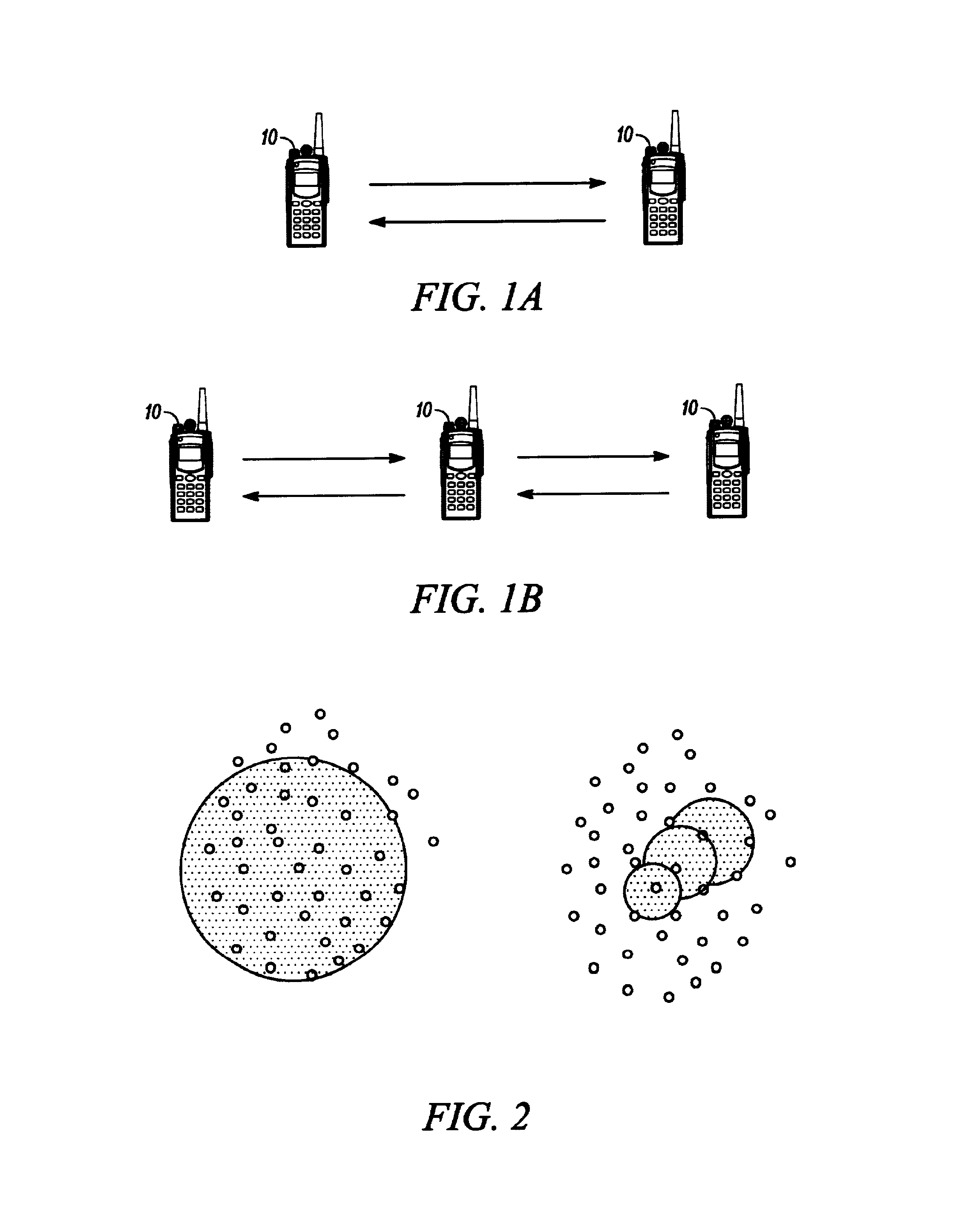Prioritized-routing for an ad-hoc, peer-to-peer, mobile radio access system based on battery-power levels and type of service
a mobile radio access system and priority routing technology, applied in the field of priority routing for mobile radio access systems based on battery-power levels and type of service, can solve the problems of not being deployed in voice systems, depleting limited-life batteries more quickly, and no present or prior system or algorithm has taken into account the impact of battery life of terminals. , to achieve the effect of excellent battery li
- Summary
- Abstract
- Description
- Claims
- Application Information
AI Technical Summary
Benefits of technology
Problems solved by technology
Method used
Image
Examples
example 2
[0133]Power level=+30 dbm, Data Rate=500 kbps.
Cost=10+(+30)+10*log10 (8 / 0.5)=40+10*1.2=52[0134]The range for this value is 0–52.[0135]Hops—The number of hops to the sender of the RA to the destination.[0136]Congestion—The average quantized level of congestion from the sender of the RA to the destination (range 0–7).[0137]Mobility—A bit designating whether or not the destination node is currently moving.[0138]Ra Heard—A bit designating whether or not the sender of the RA has recently received an RA from the destination being reported.
[0139]Battery—A value from 0–7 designating the following battery conditions:
[0140]0. IAP
[0142]2. Subscriber Device with non-battery power
[0143]3. Subscriber Device with nearly full battery (>80%)
[0144]4. Subscriber Device with battery level (>50%)
[0145]5. Subscriber Device with battery level low (>20%)
[0146]6. Subscriber Device (or Wireless Router) with minimal battery (>0%)
[0147]7. Subscriber Device: Don't Use Ever. This preventi...
PUM
 Login to View More
Login to View More Abstract
Description
Claims
Application Information
 Login to View More
Login to View More - R&D
- Intellectual Property
- Life Sciences
- Materials
- Tech Scout
- Unparalleled Data Quality
- Higher Quality Content
- 60% Fewer Hallucinations
Browse by: Latest US Patents, China's latest patents, Technical Efficacy Thesaurus, Application Domain, Technology Topic, Popular Technical Reports.
© 2025 PatSnap. All rights reserved.Legal|Privacy policy|Modern Slavery Act Transparency Statement|Sitemap|About US| Contact US: help@patsnap.com



